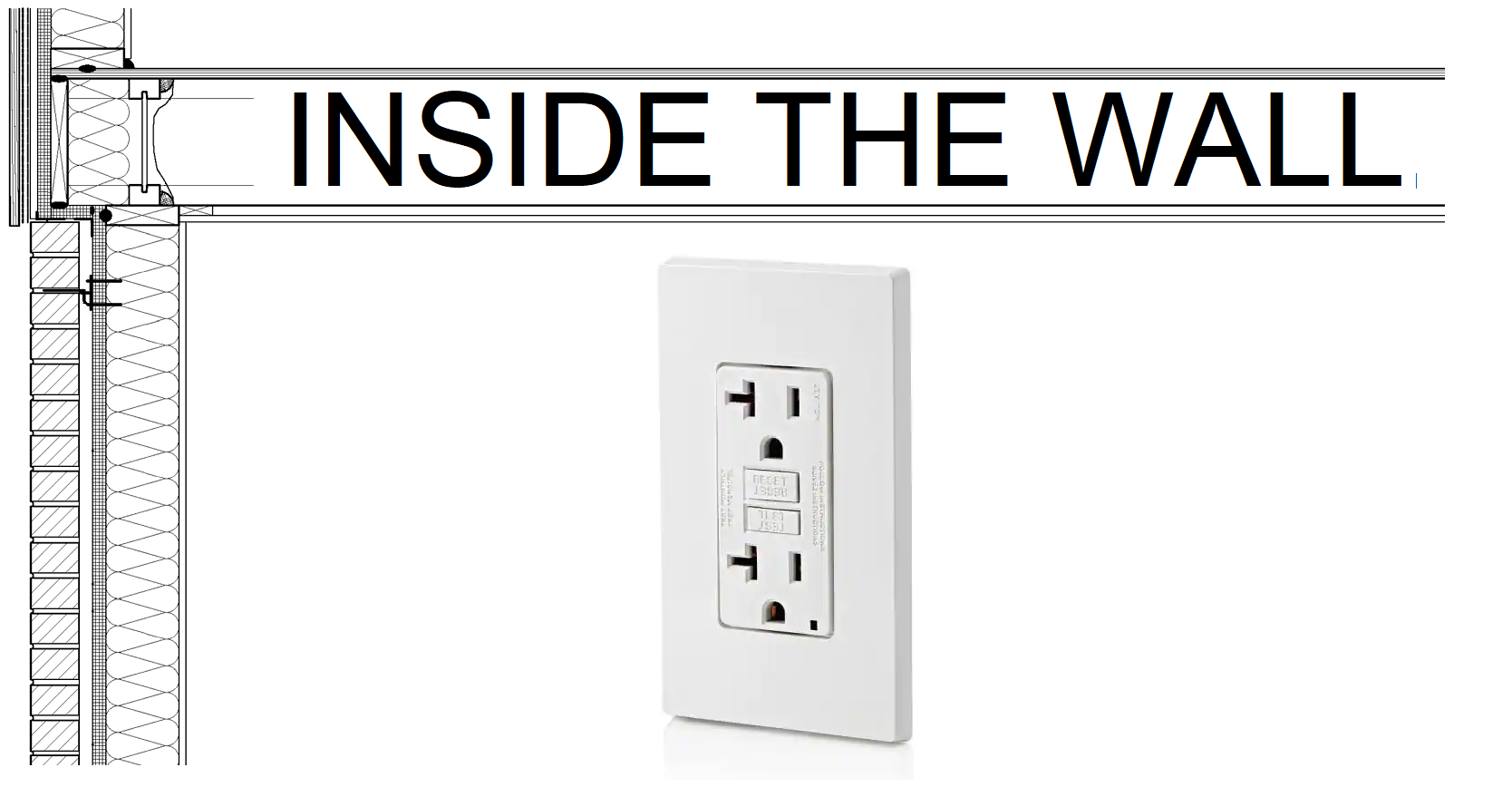In this month’s edition of “Inside the Wall” we will investigate GFI outlets. GFI (ground fault interrupter) or GFCI (ground fault circuit interrupter) are a special type of outlet found in homes and commercial buildings. They refer to the same product – an outlet that senses energy leaks, even if it’s only a thousandth of a milliamp, and interrupts the current to prevent harm. GFI outlets are required in bathrooms, garages, kitchens, basements, laundry areas, outdoors, wet areas and near sinks. Simply put, they go where water and electricity may mix.
A GFI outlet prevents a ground fault, it’s in their name, but what is a ground fault? A ground fault is an instance in which the hot wire touches any area of a grounded device or person. It can happen in situations when wiring insulation is damaged by things like rodents, aging wire, or environmental conditions. For example, say you decide to use your hair dryer while taking a shower (which I officially do not recommend). The water may get into the device and contact the hot wire. Since tap water conducts electricity there is now a path through the water and you to the ground. Electricity will always take the path of least resistance, which means some of the current will flow through you instead of back to the neutral. The resultant drop in the current returning to neutral will cause the GFI outlet to interrupt the flow of electricity and save you from an unfortunate demise in the shower.
So how does a GFI outlet do this? To understand how they work it’s important to know the basic workings of outlets and how electricity works. A normal household outlet is typically single phase, 120-volt power. When you view this type of outlet, there are two vertical slots and a round hole centered below them. The left slot (when looking at it from the front) is the neutral, the right is the hot and the hole below them is the ground. When you plug in an appliance the current flows from the hot through the appliance and back to the neutral. This means that there is a set current between the hot and neutral based on the appliance you are using. For example, if 2 amps are going out on the hot side, 2 amps must come back through the neutral. The GFI outlet measures this amount of current flowing from hot to neutral, down to a few milliamps. This is important because just 10 milliamps of current can cause the human body to “freeze” from electrical overload, leaving you incapable of releasing the object causing the shock. If there is any imbalance is detected the GFI outlet will trip the circuit, interrupting the flow of power through the outlet as fast as one-thirtieth of a second.
Now that you know how they work it’s important to know what they look like and how to properly maintain them. The most notable visual difference between GFI outlets and regular outlets is that GFI outlets typically have two buttons and a small light. One of the buttons is used to test the outlet and the other is used to reset it if it’s already been tripped. The light is a visual aid to tell if it has been tripped. The best practice to ensure the safety of you and your residence is to press the test button once a month, if it pops and can be reset the outlet is in good working order. If it doesn’t, you should replace it.
At Forward Engineers, we seek to not only be a design and consulting firm but to also educate our clients about engineering technology. While doing so, we inevitably refresh our own knowledge and sometimes even learn something ourselves. If you are seeking to work with an engineering firm that is client-centered and strives to provides services that are on time, on budget and exceed expectations, please contact us. We would love to work with you on your next project!




